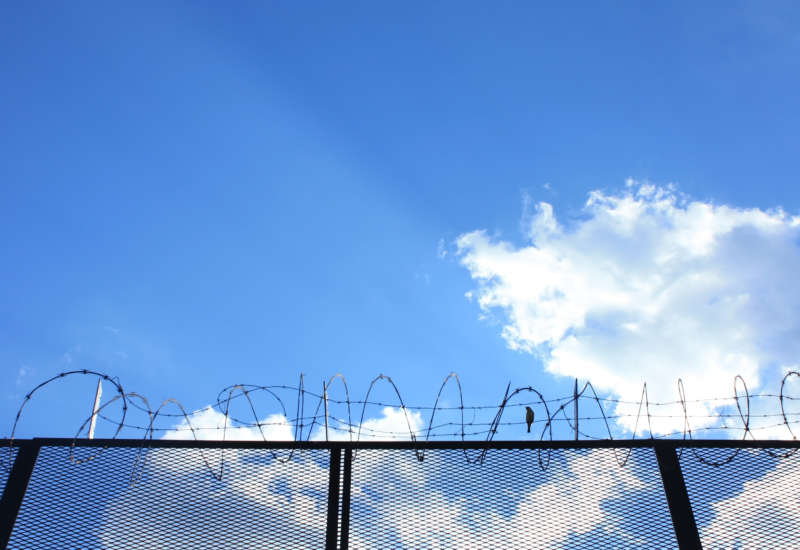As I sit wearing an oversized orange jumpsuit and silver bracelets around my wrists, I listen to the intensive management unit (IMU) supervisor at Monroe Corrections Complex say something I never expected to hear: “The Washington State Reformatory doesn’t want to take you. They say the transgenders are taking over.”
“What!?” I blurt out. “What the hell do you mean the transgenders are taking over? Are they rioting? Do the skinheads not have anywhere to sit now? That doesn’t make any sense.”
“Look, I’m just telling you what administration is saying,” the supervisor says.
It is April 11, 2018, and prison staff are trying to figure out where to send me. I have recently been kicked out of two different prisons, and I have a reputation for resistance. The prospect of being in a prison yard with trans solidarity is intriguing. These people are running out of places to send me, and I feel like they don’t have a choice.
On August 8 of that year, I walk out of IMU and hit the big yard at Washington State Reformatory (WSR) with the IMU supervisor’s words still in my head. I find about a dozen outcasts standing in a circle who identify as LGBTQ. The scene feels anticlimactic as I ask myself, “Is this it?” It seems so… ordinary. I ask when the LGBTQ group meets and how to sign up, and they tell me that they don’t have one, but they are trying to start it.
As I stand bewildered, trying to figure out how “the transgenders” are taking over, I assess the situation. This small group of gay and trans prisoners seems like most other groups gathering in the yard but without the macho insecurity.
I meet a transgender woman who shows me the “rainbow bench” where queer and trans prisoners hang out, and the small triangular patch of grass dubbed “tranny triangle.” The group is marginalized into occupying the less desirable spaces in the yard. Those spaces are then turned into stigmatized places that are joked about. “Rainbow bench” and “tranny triangle” are places where “the fellas” wouldn’t be caught dead.
Then it occurs to me: Queer and trans prisoners are occupying space like any other group at the prison. That is the prison staff’s whole problem! The prescriptive norms of institutionalized gender violence are being challenged by the mere existence of visible queer identities. This group lacks predatory masculine signifiers of power dominance and “manliness,” yet they are surviving just like the other groups.
Heterosexist prison staff are frustrated by an inability to erase creative queer possibilities.
I told the group that I was expecting more, since the staff complained that they didn’t want me because the “transgenders were taking over.” That was when I first heard the story of the rainbow bench. I would hear this story over and over, sometimes accompanied by intense laughter.
The space was named the rainbow bench because known gay and trans prisoners would spend hours hanging out at that bench. Some would walk back and forth in an area behind the bench, which created a worn path in an arc-like shape that appeared to be a rainbow. One day there was a fist fight between two people — nothing out of the ordinary for a prison yard. But what happened after that certainly was.
The prison’s gang investigation unit cordoned off the rainbow bench area with yellow crime scene tape. They brought a video camera and documented the area, paying close attention to what appeared to be a rainbow. The area stayed taped-off for several days as an investigation was conducted for suspected security threat group activity.
It was a scandal, the talk of the prison. The “fellas” would joke about the fact that a group of gay people hanging out was seen as such a threat, and what appeared to be a rainbow was investigated as a gang symbol, like a swastika or other violent gang identifier. Over six months later, people were still telling the story, at times jokingly, like it happened yesterday.
That comical overreaction was the excuse the heterosexist prison regime used to attempt to erase queer visibility in the name of “safety.” Queer possibilities defy prescriptive norms and sometimes move across areas of race and gender, challenging hegemonic masculinities and institutionalized violence. Gathering in solidarity in visibly queer spaces is a powerful way to trouble hegemonic cis-hetero masculine dominance.
By doing so, queer prisoners didn’t wait for permission to have an approved LGBTQ group to sign up for. They found the self-determination to exist, accompanied by a rainbow. I am still dreaming of a transgender takeover.


